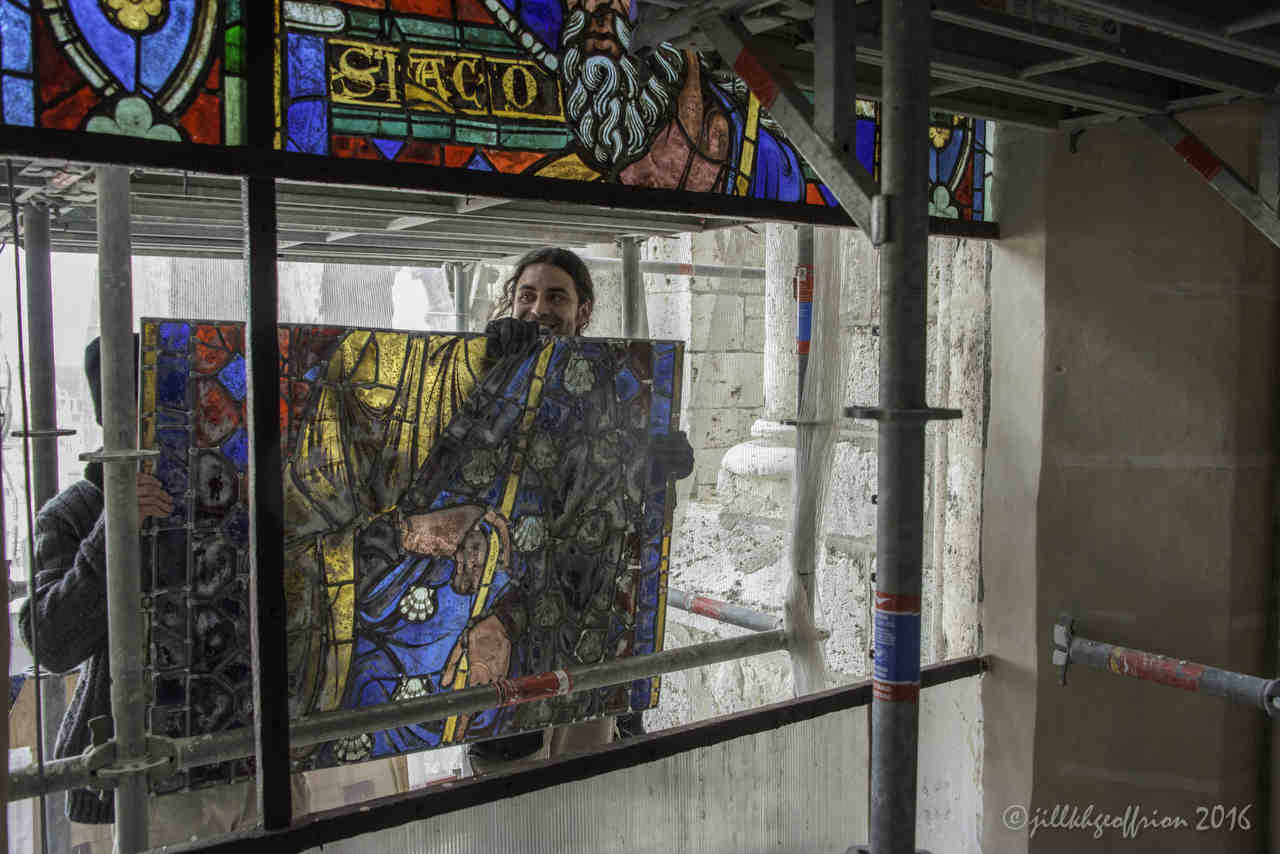By professors Madeline Caviness and Jeffrey Hamburger
We write in response to Martin Filler’s well-meaning but also misinformed blog posting concerning the restoration of the interior of Chartres Cathedral. Filler writes, “One can only pray that by some miracle this scandalous desecration of a cultural holy place can be reversed” and expresses nostalgia for the church as he first encountered it, “the scene heightened by the combination of majestic organ music, chanted liturgy, clouds of incense, and banks of votive candles.”
Anyone who climbed the scaffolding to view the restoration in progress would have witnessed the care with which it was carried out. Restorers began simply by using vacuum cleaners to remove grime centimeters thick, an accretion generated by the candles and oil lamps that Filler remembers so fondly and that continue to endanger the fabric today: one of two fires in recent years caused considerable damage to the stonework. The first took place on the east side of the north transept and very nearly spread round the pier to the wooden screen in the adjacent chapel known as “Notre-Dame du Pilier.” The second fire, which occurred as recently as June 2013, took place inside the west entrance, caused a bench to catch fire, and had the flames spread to the rows of chairs beyond, the results would have been disastrous. It could have been 1194 all over again.
The church that Filler recalls bears little resemblance to that built following this famous conflagration. Careful archaeological work, beginning with that conducted as early as the 1980’s by the German scholar Jürgen Michler, has demonstrated beyond doubt that the church’s interior originally was painted in a light ochre, with regular false masonry added in white, which often bears little resemblance to the coursing of the underlying ashlar masonry. The current restoration adheres religiously to this scheme. Such false masonry was commonplace in medieval churches. Exposed stone may appeal to a modernist aesthetic and to scholars such as Edson Armi, whose work focuses on the traces of the mason’s tools, but has little to do with medieval conceptions of sacred space.
Contrary to Filler’s assertion that virtually nothing remains of the previous painting, beneath the grime not one, but two layers of false masonry were clearly visible, one dating to the thirteenth, the other to the fifteenth century. If there is anything controversial about the restoration, it lies with the restorers’ decision to use the thirteenth-century false masonry as their guide, with which they have combined the colorful painting of the vault bosses added at a later date. This combination, however, serves as a reminder that historic buildings are modified over time, and it is no longer thought necessary to preserve only their first appearance. In the same way, the faux marble in the choir adheres to the early modern alteration of the choir, which at this point represents part of the historical record, no matter how much it distorts the original medieval arrangement. Combined with the painstaking restoration of the windows, the restoration of the original color scheme in fact enhances the perception of color in the windows. And the interior is so much lighter that in fact less artificial light is needed. Given the peril represented by the burning of votive candles, the cathedral would in fact be better off if electric ones were substituted.
In this context, it should be noted that, contrary to the impression left by Mr. Filler, the American Friends of Chartres Cathedral raises funds only for the restoration of the windows. The majority of the very considerable cost of the overall restoration is borne by the French government and donors in France. Moreover, the work, far from being carried out in the irresponsible manner suggested by the article, is guided by a scientific committee composed of conservators of historical monuments, inspectors of those same monuments, architects, historians, and historians of art. The restoration of the cathedral represents a careful and historically responsible renovation: very far from the scandal that Mr. Filler imagines. Readers should go to Chartres and judge the results for themselves.
Madeline H. Caviness, Mary Richardson Professor of the History of Art, Tufts University (emerita)
Jeffrey F. Hamburger, Kuno Francke Professor of German Art & Culture, Harvard University
Both authors are Fellows of the Medieval Academy of America and members of the advisory board of the American Friends of Chartres Cathedral.


